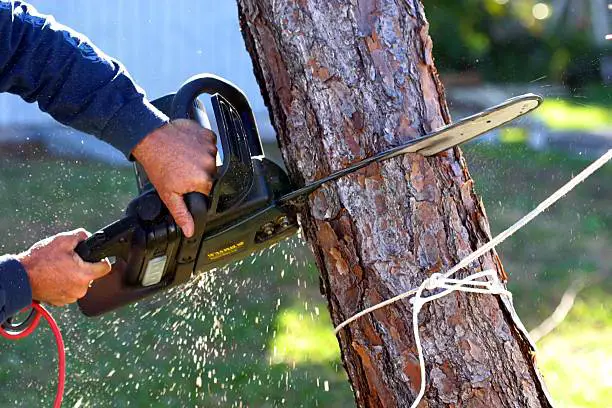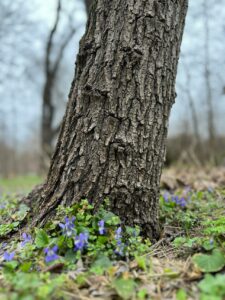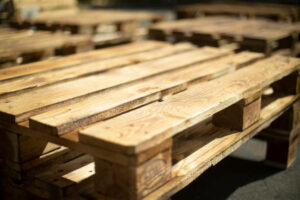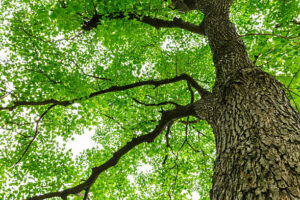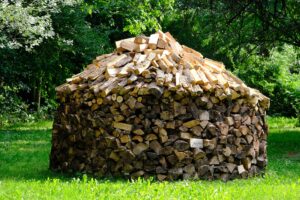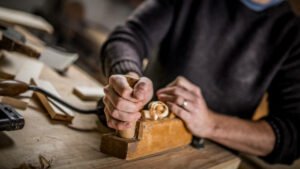When a tree becomes unhealthy or dangerous, it is often necessary to remove it. However, it’s important to know the best time to remove trees for safety and cost reasons. Tree removal costs are typically cheaper in winter as tree care companies need less work. This article will explore the best time to remove a tree and why.
Leaning or Sagging Trees
If a tree is leaning, it is important to have a certified arborist evaluate the situation and decide on the best course of action. If the lean is very dangerous and a risk to people or structures on your property, the arborist may recommend removing the tree. Otherwise, they may recommend bracing or cabling the leaning tree to stabilize it in the ground.
A leaning tree is a sign that the roots are weak or damaged, which can make it difficult for the tree to stand up straight in the ground. This can be caused by several different things, such as storm damage or mechanical damage that has altered how the tree grows. It could also be due to the root system being crowded by other nearby trees or by soil that is unstable and can’t support the root system properly.
Another reason a tree might lean is because of insect infestation or disease. This can also cause dead branches on the tree to become weakened and more likely to droop or fall. If a tree is infested with an insect or disease, it is important to have it removed as soon as possible.
The best time of year to remove a leaning tree is during the dormant season of frozen ground, between late winter and early spring. The frozen earth will allow for less disturbance of the surrounding landscape and a safer removal.
If the lean is less severe, it may be possible to stake the cut down a tree, to help it stand up straight. Begin by using a garden hose to get the soil around the base of the tree thoroughly wet. Then, position a stake about 18 inches from the base of the tree at a 45-degree angle. Use a mallet to drive the stake into the ground until it is at least 18 inches deep in the soil. Next, position a strap near the base of the tree and wrap it tightly around the trunk. Pull on the strap gently to apply pressure that will help to straighten the tree. Continue this process until the tree is fully upright.
Diseased or Infected Trees
If a tree is dying or infected, it needs to be removed immediately. Left unchecked, it can spread the infection or disease to surrounding trees. Trees that are infected or other dying trees pose a health and safety risk and can cause damage to your home and property. To prevent this from happening, have a certified arborist evaluate the tree and remove it as soon as possible.
When a tree is dying, it may be exhibiting visible symptoms such as wilted foliage, discolored bark, or rotted roots. These signs can be a warning that the tree is not able to absorb nutrients and water through its roots. A tree that is infected or dying may also have vertical cracks or seams, rotting at the base of the tree cut trunk, and fungi growing on the bark.
Another sign that a tree is dying or infected is if it is prone to dropping large branches and debris on the property. A healthy tree should not drop more than the occasional branch, but if a tree drops multiple branches in a short amount of time, it’s likely due to structural problems and should be removed.
A diseased tree or infected tree can be an eyesore in the landscape. It can affect the look of your yard and even the value of your home, so it is important to take action as soon as you notice any signs that a tree is unhealthy.
Late fall and winter are the best times to have dead or damaged trees removed. The leaves have fallen, so the tree’s structure is more visible, and it is easier to spot any diseases or insect infestations that may be present. Additionally, it is not as hot during these seasons, and heavy equipment can easily move dead trees around the area without damaging your lawn or garden.
A tree is usually considered undesirable when it poses a risk to property or people, has a deformed appearance, is infested with insects or diseases specific to the tree species itself, or has shallow roots that damage lawns and sidewalks. This includes common landscape trees like black locust, Siberian elm, spruce, Norway maple, and white mulberry, but it can include many other species as well.
Trees That Pose a Risk to Your Home
Trees add beauty and value to your property, but they also can pose a safety risk. If a tree is leaning or sagging, it could fall and damage your home or other structures on your property. It would be best if you had these trees inspected by a professional to determine the best course of action, which may include tree removal.
The best and cheapest time of year to remove a dangerous or unwanted tree is during the winter. During this season, many leading local tree service companies offer discounted rates. This is because demand for their services is typically lower than at other times of the year.
During the summer, it is too hot and humid to work efficiently with equipment for tree removal. Plus, the heat can put a lot of stress on the health of a tree and cause it to become more vulnerable to falling debris during the removal process.
A good rule of thumb is that a large tree should be planted no closer than 20 feet from your house or other structures on your property. Otherwise, it can cause damage to your foundation or disrupt your roof or siding. In addition, any large trees with branches that hang over buildings or other structures need to be pruned regularly to avoid a potential fall.
Another consideration is whether the tree is an invasive species. Non-native trees can choke out native plants and prevent them and other nearby trees from obtaining the water and nutrients they need to thrive. This can hurt the ecosystem and the wildlife that relies on it for food, shelter, and other resources.
When it comes to invasive trees, the safest course of action is usually to cut them down rather than trying to contain them with trimming or other management techniques. A certified arborist can help you identify if an invasive tree on your property needs to be removed.
Occasionally, you may want to save a particular tree that is damaged or dead but not considered dangerous. In this case, you can try to convince your neighbor that it’s important to have the tree inspected by a certified arborist and follow their recommendations for removal. If you can’t persuade your neighbor, you can ask to see a copy of the arborist’s inspection report and make your concerns free tree removal very clear in writing.
Trees That Are Not Diseased or Infected
Trees are a beautiful addition to any property, but they also need to be removed when they begin to fall apart or pose a risk to people, buildings, or vehicles. While an ISA-certified arborist can sometimes save trees, other times, the best choice is to remove them simply. Identifying when this is the case each year for tree removal, can be tricky, especially for homeowners who may not be familiar with the specific signs of disease or insect infestation in trees.
However, if you notice that a tree is not doing well, it is always the best option to have it removed before it becomes dangerous. This can save you from having to pay for costly damages or repairs and can also prevent the spread of disease and insects to other healthy trees on your property.
If you are unsure whether or not a tree is dying, you can consult with an arborist to learn the specific warning signs to look for. These include a loss of leaves or needles, thinning or dying branches, cracks in the bark, emergence of holes or feeding galleries, fungi growing on the trunk or roots, and general structural weakness.
Many environmental factors can cause diseases in trees, including drought, overcrowding, and damage to the stems or roots. When these defenses are weakened, disease can easily take hold and result in the death of the tree.
Fungus, like molds and mildew, is one of the most common causes of tree disease. The symptoms of fungus in a tree include a loss of leaves or needles, cracks in the bark, misshaped buds, and premature fall coloration. Some fungi even form mushrooms or shelf-like structures on the limbs, trunks, butts, and root flares of affected trees.
The best time of year to remove a diseased or infected tree is during the winter when most pests and diseases are dormant. This gives your yard a clean slate and allows for the removal of unhealthy or diseased trees before they can affect surrounding vegetation or pose a risk to your home. Additionally, winter is when most tree companies offer their lowest rates.
